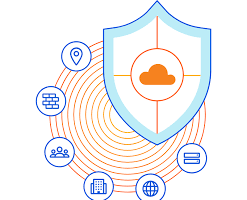Introduction
Think of your network like a bustling highway, with sensitive information speeding back and forth. But on this highway, there’s a constant threat of cybercriminals lurking in the shadows, ready to intercept your data. So, how do you defend this digital gateway? It starts with understanding the fundamentals of network security and implementing robust safeguards.
Abstract
Overview
Network security is the backbone of your cybersecurity strategy, ensuring the integrity, confidentiality, and availability of data as it moves through your systems. By deploying firewalls, intrusion detection systems, encryption, and monitoring tools, you create barriers against attackers trying to hijack your valuable data.
In a world where data flows like traffic on a busy highway, network security is the digital gatekeeper protecting your organization's most valuable assets. But, just like unpredictable road hazards, malicious actors are lurking to exploit vulnerabilities. In this blog, we’ll dive into the best practices for securing your network and preventing cyber threats from hijacking your data.


[Disclaimer: This blog post is for informational purposes only and should not be construed as legal or financial advice. Organizations should consult with legal counsel and regulatory authorities to ensure compliance with reporting requirements.]
Mandatory
To meet regulatory requirements (like GDPR or HIPAA), you must ensure your network is secured from unauthorized access, breaches, and attacks. This is non-negotiable for compliance and the protection of your organization.
Applicability
Network security is critical for all organizations—especially those handling sensitive data in sectors like finance, healthcare, and government. It applies to businesses of all sizes, from startups to enterprises.
Regulatory or Company Interest?
Network security isn’t just an IT issue—it’s a compliance and reputation concern. Breaches can lead to heavy penalties, so maintaining a secure network is essential for safeguarding data and meeting regulatory standards.
Key Guidelines
Regularly update network defenses, implement multi-factor authentication, segment networks, encrypt data, and monitor traffic for unusual activity. These are key practices for keeping hackers out.


Key Implications
Failing to secure your network could lead to data breaches, financial losses, and legal consequences. Plus, you risk damaging your organization's trust and reputation with customers and partners.
Countries with Adoption or Influence
Network security standards are adopted worldwide, with countries like the U.S., U.K., and EU nations enforcing strict regulations to safeguard data.
International Frameworks Influenced
Global frameworks such as ISO 27001 and NIST Cybersecurity Framework highlight the need for strong network security practices to protect sensitive information.
Regional and Industry-Specific Frameworks
For sectors like healthcare (HIPAA) or finance (PCI-DSS), regional and industry-specific frameworks require organizations to have robust network security to protect personal and financial data..
Secure Your Digital Identity with SecureKnots
Contact us to learn more about our cybersecurity services and ensure your organization meets cybersecurity requirements.


Conclusion
Your network is the digital highway that carries your organization's data. Securing it isn’t just a best practice—it’s a necessity to protect against malicious actors and meet compliance requirements. A well-secured network ensures your data remains safe, and your organization remains trustworthy.
How SecureKnots Can Help
At SecureKnots, we specialize in securing your network through VAPT (Vulnerability Assessment and Penetration Testing) and Ransomware Attack Simulations, testing for potential vulnerabilities and providing solutions before they are exploited. Our Security Awareness Trainings equip your team to recognize threats, and our internal and external audits ensure that your network is continuously aligned with industry regulations. With SecureKnots, you can ensure your network stays safe from even the most sophisticated cyber threats.
This blog focuses on the importance of securing employee access to internal systems while showcasing how SecureKnots can help organizations strengthen their access controls. It is informative and engaging, highlighting the significance of Network Security Let me know if you need further adjustments!
Thank you for your attention! If you have any inquiries about cybersecurity requirements or need expert guidance, please don't hesitate to contact SecureKnots.
This should wrap up the blog and fulfill the promise made in the previous one!
Network Security-Guarding the Digital Gateways
In the digital age, your network is like a highway, with data zooming back and forth every second. But just like any highway, there are bad drivers—hackers, cybercriminals, and malicious actors—looking to hijack valuable information. So, how do you ensure that your network is secure, and all that data stays safe?
WITH OUR SHORT BLOGS
STAY UP TO DATE
Copy Rights @ 2023 SecureKnots. All Rights Reserved.
CONTACT US
Contact@Secureknots.com
USA
+1-302-601-2346
+1-302-608-6708
INDIA
080-31658865
GET IN TOUCH
